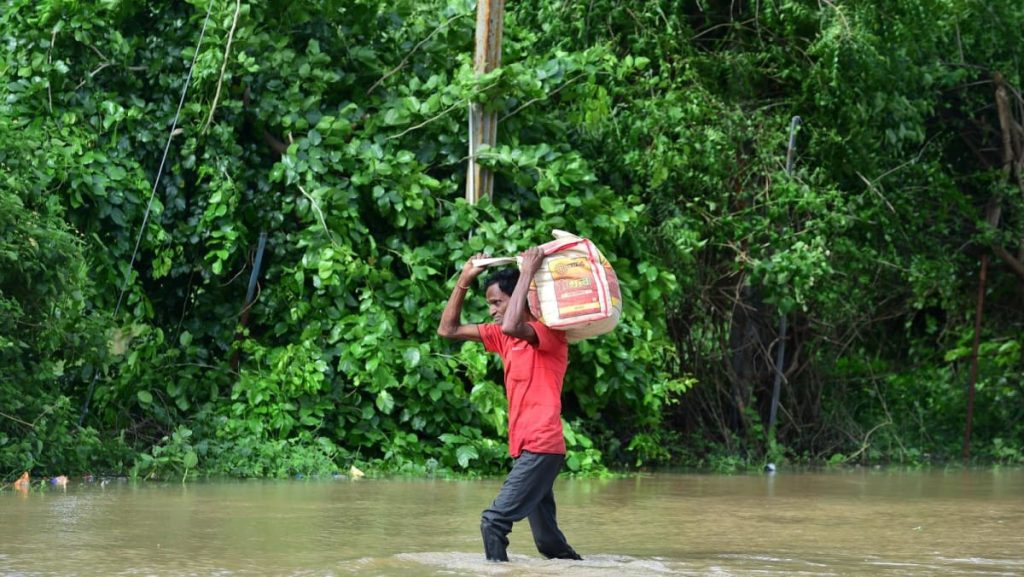Intense monsoon rains and floods have wreaked havoc in India’s Gujarat state, resulting in the deaths of at least 28 people in just three days. The deaths were attributed to drowning and individuals being hit by falling trees. The weather department has issued warnings of more heavy rain to come on Thursday, intensifying concerns for the western coastal state. Rivers have overflowed, causing more than 30,000 individuals to evacuate their homes.
The state government reported that 13 people had drowned, while the others perished as a result of collapsing houses or trees. However, the Indian Express newspaper reported a higher death toll of 35 individuals across the state. In response to the crisis, disaster and army officials have conducted rescue operations, saving 1,856 people thus far. The city of Vadodara has been one of the hardest hit areas, with widespread damage and loss of life.
The situation in Gujarat continues to be dire, with many areas facing severe flooding and the risk of more heavy rain on the horizon. The government has urged residents to remain vigilant and take necessary precautions to ensure their safety. Relief operations are in full swing, with rescue teams working tirelessly to evacuate those in danger and provide aid to affected communities.
The monsoons have caused extensive damage to infrastructure, homes, and livelihoods across Gujarat, leaving many families homeless and in need of assistance. The state government and relief agencies are working together to provide shelter, food, and medical aid to those affected by the disaster. Efforts are also being made to assess the extent of the damage and initiate recovery and rehabilitation measures.
As the death toll continues to rise and the situation remains critical, it is imperative for authorities to coordinate rescue and relief efforts effectively. The impact of the floods on Gujarat’s economy, agriculture, and environment is expected to be significant, necessitating long-term recovery and rebuilding initiatives. The state and central governments must work in tandem to address the immediate needs of the affected population and devise strategies for long-term flood management and disaster preparedness.
In times of crisis, the resilience and compassion of communities come to the forefront as individuals and organizations come together to support those in need. The floods in Gujarat serve as a reminder of the immense power of nature and the importance of disaster risk reduction measures. It is crucial for governments to prioritize investments in infrastructure, early warning systems, and community preparedness to mitigate the impact of natural disasters and safeguard the lives and livelihoods of vulnerable populations.















